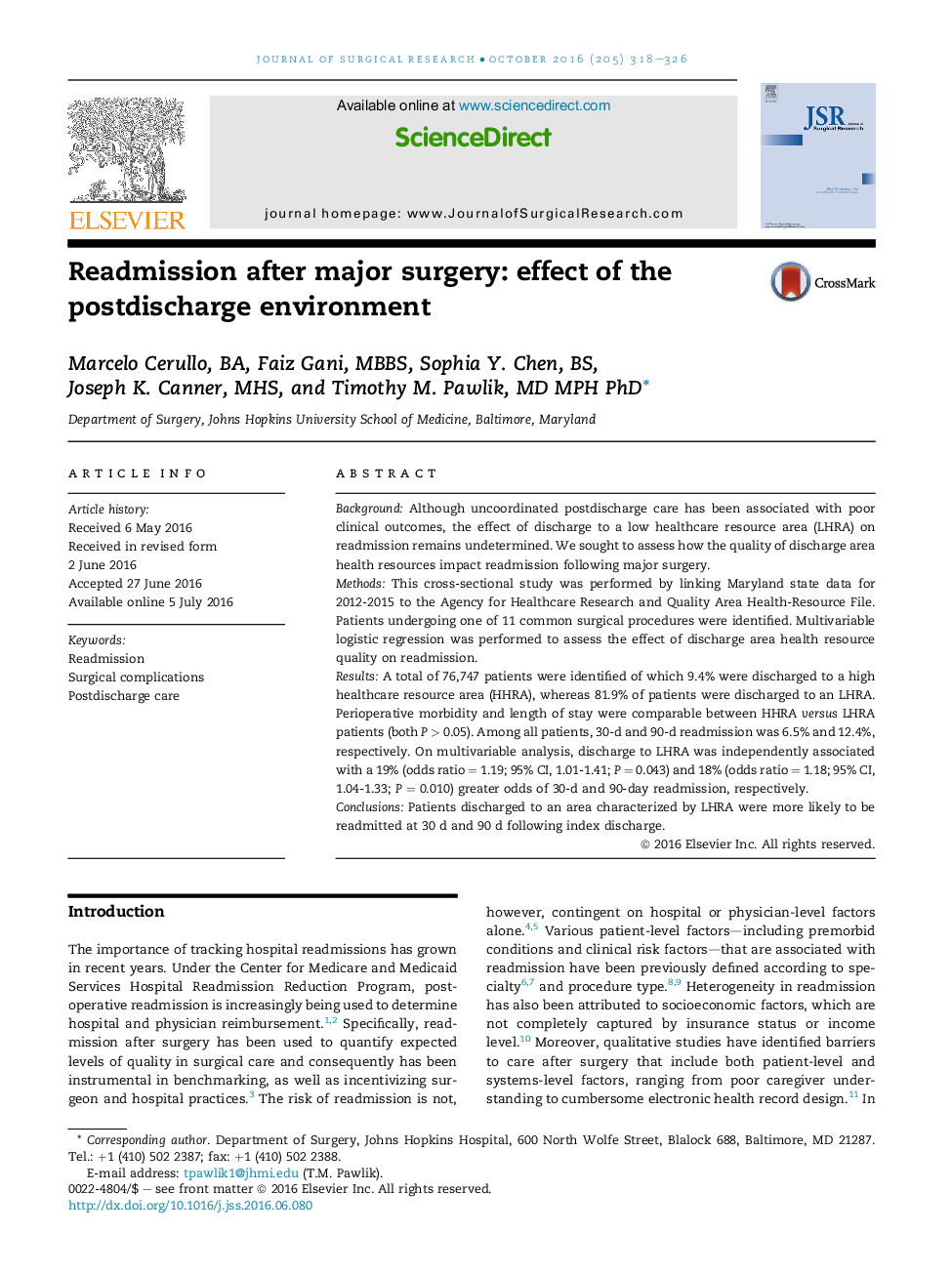| Article ID | Journal | Published Year | Pages | File Type |
|---|---|---|---|---|
| 4299032 | Journal of Surgical Research | 2016 | 9 Pages |
BackgroundAlthough uncoordinated postdischarge care has been associated with poor clinical outcomes, the effect of discharge to a low healthcare resource area (LHRA) on readmission remains undetermined. We sought to assess how the quality of discharge area health resources impact readmission following major surgery.MethodsThis cross-sectional study was performed by linking Maryland state data for 2012-2015 to the Agency for Healthcare Research and Quality Area Health-Resource File. Patients undergoing one of 11 common surgical procedures were identified. Multivariable logistic regression was performed to assess the effect of discharge area health resource quality on readmission.ResultsA total of 76,747 patients were identified of which 9.4% were discharged to a high healthcare resource area (HHRA), whereas 81.9% of patients were discharged to an LHRA. Perioperative morbidity and length of stay were comparable between HHRA versus LHRA patients (both P > 0.05). Among all patients, 30-d and 90-d readmission was 6.5% and 12.4%, respectively. On multivariable analysis, discharge to LHRA was independently associated with a 19% (odds ratio = 1.19; 95% CI, 1.01-1.41; P = 0.043) and 18% (odds ratio = 1.18; 95% CI, 1.04-1.33; P = 0.010) greater odds of 30-d and 90-day readmission, respectively.ConclusionsPatients discharged to an area characterized by LHRA were more likely to be readmitted at 30 d and 90 d following index discharge.
